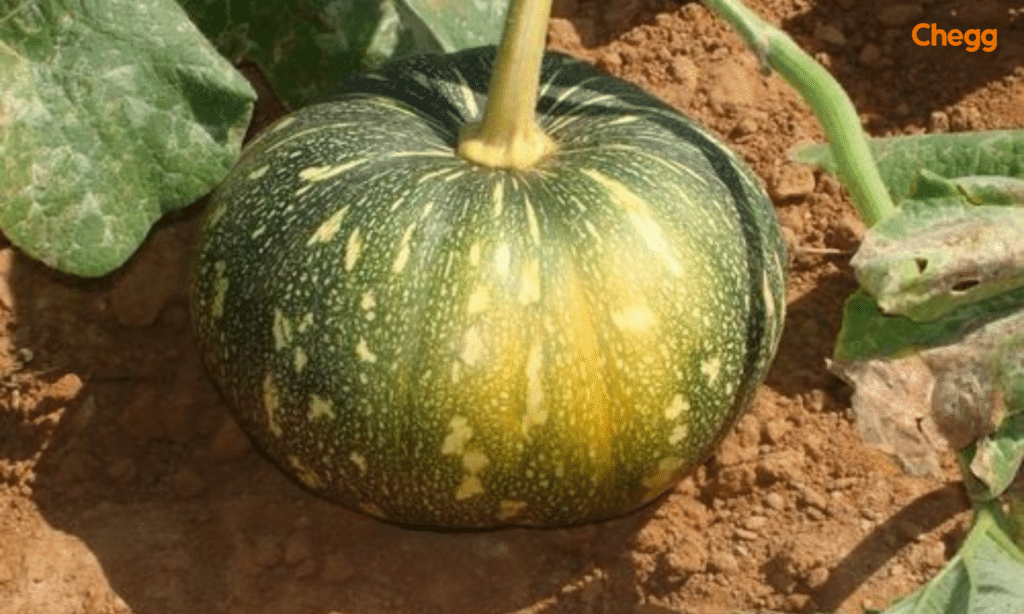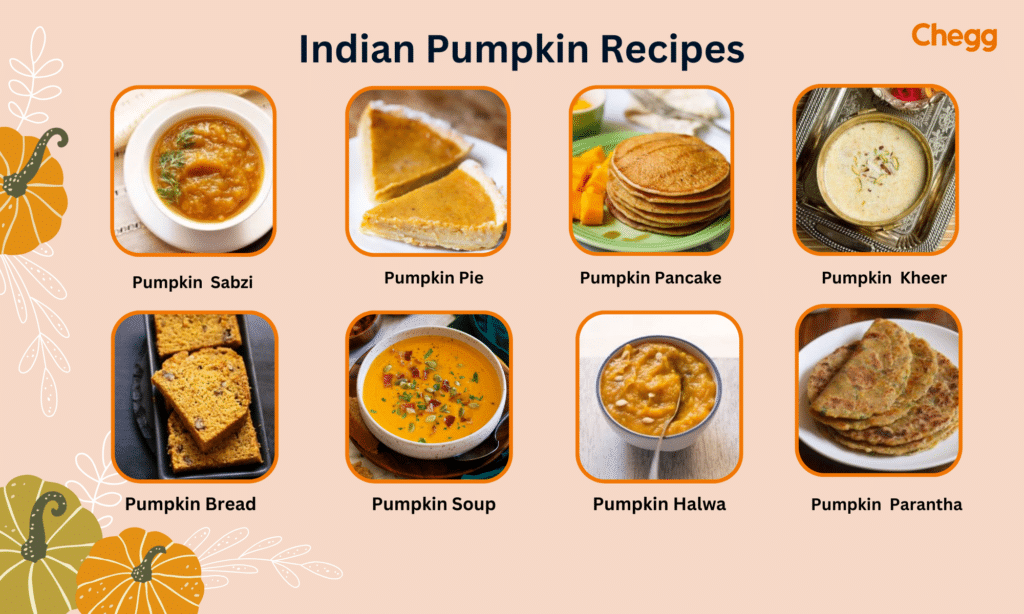Indian Pumpkin- The National Vegetable of India & its Significance

Table of Contents
National vegetables symbolize a nation’s history, culture, and connection to its land. The national vegetable of India is a symbol of national pride and common history in a country known for its richly varied cuisine.
You’d be surprised to know that India’s national vegetable carries historical and cultural significance. It is often deeply intertwined with festivals, rituals, and traditional practices. Its presence on the dining table is a testament to the continuity of customs passed down through generations. Moreover, the national vegetable is a reminder of ancestors’ wisdom and communities’ resilience.
Which is the National Vegetable of India?
The national vegetable of India is the “Indian Pumpkin”, commonly known as Kaddu in Hindi. It is widely consumed in India due to its versatility and the ability to grow even in the hottest days in the tropical climate of India. Also, it doesn’t require any unique soil properties making it easier to cultivate.
Why is Pumpkin India’s National Vegetable?
Pumpkin’s status as the national vegetable of India is more of a cultural acknowledgement than an official designation. While India doesn’t have an officially declared national vegetable, pumpkin holds significant culinary and cultural importance throughout the country.
- Indian pumpkin cooks quickly and goes well with a variety of flavors. It is a staple ingredient for many different recipes due to its versatility in the kitchen.
- The sweet flavor of pumpkin pairs well with lentils and spices, as well as other vegetables, making it a great addition to a variety of recipes.
- Indian pumpkin thrives in India’s tropical regions and perseveres through the year’s hottest days.
- Indian households can count on a consistent supply of this vegetable because of its capacity to grow even in the hottest months.
Moreover, pumpkins feature prominently in Indian festivals and rituals, adding to their cultural significance. During festivals like Diwali and Navratri, pumpkins are used as offerings in prayers and adornments in decorations, symbolizing abundance and prosperity.
Despite the absence of an official designation, pumpkin’s widespread cultivation, culinary versatility, and cultural significance firmly establish it as a beloved vegetable in India, cherished for its role in both everyday meals and festive celebrations.
Which is the King of Vegetables in India?
The brinjal, also known as eggplant or aubergine, is often referred to as the “King of Vegetables” in India. Its magnificently glossy, rich purple exterior and meaty, highly nutritious white flesh contribute to this regal status. Notably, brinjal was first domesticated in India, where it claims the title of the ‘king of vegetables’ due to its widespread use and cultural significance.
History of Pumpkin

Now that you know the Indian national vegetable name, you must understand its origin. Pumpkins have a rich history dating back around 7,500 years to Central America, where indigenous peoples cultivated them for sustenance and medicinal purposes. They played a vital role in early American agriculture, with Native Americans incorporating them into their diets long before the arrival of European settlers.
Pumpkins gained global prominence through trade routes, reaching Europe by the 16th century. Over time, pumpkins became synonymous with fall harvest traditions, especially in North America, where they are celebrated in festivals like Halloween and Thanksgiving.
Significance of Pumpkin in Indian Culture and Cuisine
In the Indian subcontinent pumpkins were brought by traders and travelers, pumpkins quickly became a staple crop due to their adaptability to various climates and soil conditions. In India, pumpkins hold cultural significance, featuring prominently in traditional dishes. Its subtle sweetness and hearty texture have been integral to classic recipes like Kaddu Ki Sabzi and Pumpkin Sambar. The Pumpkin’s ability to absorb and elevate the flavors of spices has made it a beloved ingredient in these cherished preparations.
Beyond culinary uses, pumpkins play a role in Indian festivals and rituals. During festivals like Diwali and Navratri, pumpkins are often used as offerings and decorations. Additionally, various parts of the pumpkin plant, including leaves and seeds, are utilized in Ayurvedic medicine for their medicinal properties.
From the hearty ‘Kaddu ki sabzi’ in the North to the coconut-infused ‘Puliserry’ in the South, its ability to absorb and enhance spices creates a symphony of tastes tantalizing the senses. The pumpkin’s tender flesh adds sweetness and creaminess to curries, stews, and soups, balancing Indian spices.
Types of Pumpkin in India
Pumpkin is a versatile vegetable that boasts an impressive range of varieties. From the northern reaches to the southern coasts and the arid West to the lush east, the country’s diverse agro-climatic conditions have given rise to an incredible spectrum of pumpkin types, each with unique attributes.
The iconic ‘Kaddu’ reigns supreme in the northern regions, characterized by its vibrant orange hue and mildly sweet taste. Moving southward, the ‘Mathanga’ takes the spotlight, its elongated green form contributing a distinct flavor to dishes like ‘Eriseri’.
Therefore, Pumpkin varieties in India exhibit remarkable differences in size, color, and taste, showcasing the vastness of the nation’s agricultural diversity.
Pumpkin in Festivals and Celebrations

The Pumpkin, India’s national vegetable, is central to the country’s vibrant tapestry of festivals and celebrations. Its versatile nature and cultural significance make it an indispensable ingredient in traditional dishes that grace festive occasions.
Importance of Pumpkin in Diwali
In the realm of Indian festivals, the Pumpkin assumes a special role. During Diwali, the Festival of Lights, people mark the presence of Pumpkin by preparing delectable Pumpkin Halwa. The bright orange hue of the Pumpkin reflects the festive spirit and adds a visual delight to the celebrations.
Importance of Pumpkin in Onam
Beyond Diwali, the Pumpkin finds its way into various regional celebrations. In the southern state of Kerala, the festival of Onam witnesses the preparation of ‘Eriseri’, a coconut-based pumpkin stew. This dish, bursting with flavors, is an essential component of the grand Onam Sadya (feast) and underlines the cultural significance of the Pumpkin in commemorating the state’s agricultural heritage.
The Pumpkin’s role in Indian festivals goes beyond mere culinary contributions. Its presence on dining tables during auspicious occasions symbolizes abundance, good fortune, and the unity of families and communities. The Pumpkin’s use in these celebrations not only reflects its nutritional value and culinary versatility but also underscores its deep-rooted connection to the cultural fabric of India.
Nutritional Benefits of Pumpkin
Pumpkin, the national vegetable of India, goes beyond its culinary versatility to offer a treasure trove of nutritional benefits, making it a valuable addition to any diet. Pumpkin has rich nutritional content consisting of a range of essential vitamins, minerals, and health-promoting compounds that contribute to their undeniable dietary importance.
- Pumpkins are notably low in calories and fat while rich in dietary fiber, aiding digestion and promoting a feeling of fullness.
- They are rich in Vitamin A which means it is good for the eyes, skin, and health.
- Additionally, pumpkins contain significant levels of vitamin C, an antioxidant that boosts immunity and aids in collagen production.
- Mineral-wise, pumpkins offer a remarkable dose of potassium, contributing to balanced fluid levels and proper muscle function.
- The orange color comes from beta-carotene, a powerful antioxidant that fights free radicals and reduces the risk of chronic diseases.
- The seeds of the Pumpkin deserve special attention. Pumpkin seed protein, healthy fats, and minerals like magnesium, iron, and zinc are abundant.
- Linking them to improved heart health, better prostate health, and enhanced sleep quality.

Culinary Versatility: Pumpkin’s Diverse Uses
Pumpkin, India’s national vegetable, stands as a testament to its remarkable culinary versatility, finding its way into a myriad of dishes that span the length and breadth of the country. This humble vegetable, scientifically known as ‘Cucurbita pepo’, boasts an astonishing range of sweet and savory applications that have captured the hearts and palates of Indians for generations.
Pumpkin’s sweets are also captivating. Pumpkins easily transition from savory to sweet, from the rich ‘Pumpkin Halwa’ to the delicate ‘Pumpkin Payasam’. Its sweetness intensifies when cooked, making it a versatile ingredient for festive and daily desserts.
Pumpkin uses vary by region, reflecting India’s cultural and climatic diversity. Pumpkin’s rich, earthy flavor complements hearty Northern cuisine, while its mild sweetness balances coconut-based Southern dishes. Roast, sauté, boil, or mash pumpkins to enjoy their versatile flavor and nutrition.
Also Read:-
- National Flower of India – Interesting Facts
- National Tree of India: Banyan Tree
- Which is the national fruit of India?
Pumpkin Farming and Sustainability
In India, pumpkin farming is increasingly adopting sustainable practices to address environmental concerns while ensuring agricultural productivity. With over 1.3 million hectares of land dedicated to pumpkin cultivation, embracing sustainability is crucial.
Organic farming methods are gaining popularity, reducing chemical inputs and promoting soil health. Water conservation techniques, like drip irrigation, are crucial in regions facing water scarcity, covering approximately 56% of agricultural land. Crop rotation and intercropping strategies, practiced on nearly 80% of pumpkin farms, enhance soil fertility and reduce dependence on pesticides.
Emphasizing indigenous pumpkin varieties not only preserves biodiversity but also aids in climate resilience. Sustainable pumpkin farming not only safeguards the environment but also supports the livelihoods of millions of farmers while ensuring food security for the nation.
Conclusion- The National Vegetable of India
Pumpkin’s designation as India’s national vegetable is not merely a culinary honor but a testament to its multi-dimensional significance. As the Pumpkin gracefully occupies a central place in the diverse tapestry of Indian cuisine, its role extends beyond the plate. It symbolizes the harmonious blend of tradition and adaptation, reflecting India’s rich heritage.
The Pumpkin’s status as a national emblem highlights its adaptability to India’s varied agro-climatic conditions. This adaptability ensures a steady supply of this nutritional powerhouse nationwide, contributing to food security. Its inclusion in traditional and modern recipes shows its versatility, making it an essential part of daily meals and celebrations.
Frequently Asked Questions ( FAQ’s )
Is potato the national vegetable of India?
The term “national vegetable of India” is occasionally used to describe the Indian pumpkin, or “Kaddu.” It is versatile, simple to grow, and extensively consumed across the nation. In terms of consumption, potatoes are a serious candidate to be India’s most popular vegetable.
Why is pumpkin our national vegetable?
The Indian pumpkin gained its reputation as the national vegetable because it grows widely throughout the nation and can adapt to many types of soil. Its distinctiveness can be attributed to its ease of growing, adaptability in cooking, and high nutritional content.
What is the national fruit and national vegetable of India?
The national fruit of India is the mango, while the national vegetable is the pumpkin. Both are deeply ingrained in Indian culture and cuisine and celebrated for their versatility and flavor.
What are the benefits of eating pumpkin?
Pumpkin is rich in vitamins, minerals, and antioxidants, promoting eye health, boosting immunity, and aiding digestion. Its high fiber content supports weight loss and heart health. Additionally, pumpkin seeds are a good source of protein and healthy fats, benefiting overall health and well-being.
Is the brinjal the national vegetable of India?
There is no official national vegetable in India. But other veggies are popular and eaten all over the nation, like ladyfingers (okra), eggplant (also known as brinjal), and different kinds of beans and lentils.
Which vegetable is the king of vegetables?
The brinjal was crowned the King of Vegetables due to its remarkably beautiful purple skin as well as its juicy and nutrient-dense flesh. The Solanaceae family includes brinjal, aubergine, and eggplant.
Got a question on this topic?